In our earlier blogs, we discussed “Game Theory In Blockchain Technology: Key To Strategic Decision Making” and “Application Of Game Theory For Blockchain Security” For anyone new to the concept of game theory, we suggest going through the previous blogs first to be able to make most out of the reading. The fundamental reason for miners or mining pools joining a blockchain network is to maximize the mining rewards/profits/payoffs. Mining management on a blockchain requires managing too many elements like computational power allocation, block size, fork selection, pool selection, and reward allocation. That’s why game theory has a pivotal role to play to maximize the mining rewards on the blockchain through a set of strategies.
We will try to understand the application of game theory in both “Individual Mining” and “Pool Minning“
INDIVIDUAL MINING
Computational Power Allocation
We will understand this by taking the example of Bitcoin. Mining on Bitcoin is a type of competition wherein miners contend for the mining rewards. Utility maximization here is a function of relative strategy followed by each miner to allocate its computational power. A non-cooperative game is applied to analyze the interaction among the miners. As long as the mining reward is greater than the cost incurred, it makes sense for a miner to invest in computational power. Hence, a Nash Equilibrium exists as which investing is the best option for each miner. Nash Equilibrium also prevents the occurrence of a monopoly as at equilibrium every miner has a positive utility irrespective of the strategies of the other miners.
The miner’s strategy, more or less, revolves around investment in the computational power. This means that at the equilibrium each miner can optimize its equilibrium and has no incentive to deviate from honest mining.
For a simple reason that a blockchain network may comprise of numerous miners, a stochastic game model could be applied to analyze a miner’s strategy.
Because mining consumes high computational power, an edge computing paradigm has been introduced to offload the mining tasks of mobile devices. Since edge computing resources are limited, the challenge is how to allocate the computing resources of a service provider to the miners. This is where the Stackelberg Model of game theory is applied. The service provider acts as a leader for setting the price of a service, and the miners act as the followers. Though the game has a Stackelberg Equilibrium, in reality, a miner never has perfect information of the other miner. Hence a Bayesian game is adopted.
Fork Chain Selection
The fundamental of the Nakamoto protocol lies in the concept of consecutive Proof of Work (PoW) puzzles. The next puzzle depends on the solution of the previous puzzle. Every miner has two choices to make as listed below:
- Reporting its puzzle solution to mine on the longest chain
- Moving to the next puzzle secretly without reporting its found solution to the puzzle. A fork chain may emerge here as the miner trades off reporting the puzzle to maximize its utility
What a miner is uncertain of is whether he is the first one to find the solution to the puzzle or not
A sequential game with imperfect information could be applied. This means the game will have a multiplicity of sequential equilibrium wherein a miner choosing to report or not report the solution is a factor of the computational power that he uses to solve the puzzle. By not choosing the longest branch a miner may waste its effort that may have undergone to solve the puzzle. Hence the Nash Equilibrium lies in mining on the longest chain.
For the sake of simplicity of this post, we shall not be covering the case of the hard fork and soft fork.
Block Size
A miner earns more transaction fee by including more transactions in a block. However, this increases the time to reach the consensus and decreases the miner’s probability of gaining a reward. Maximization of utility for a miner in this depends upon the number of transactions to be included in a block relative to the other miner’s strategy. There exists two Nash Equilibrium for different scenarios based on the change in the transaction fees or mining rewards. The two equilibriums are either miners choosing to include transactions in their block or choosing not to add transactions in their block. To avoid the occurrence of miners not adding transactions to their blocks, the concept of maximum block size was introduced. One miner’s loss by not adding transactions to the block will become another miner’s gain.
When the block size is unlimited, the Nash Equilibrium is at all the miners choosing to add all the transactions to the block. This also gives rise to sequential equilibrium and several Nash Equilibrium at which the miner’s utility is less than the sequential equilibrium. Unlimited block size has also given birth to the concept of a block getting verified by other network members before getting added to the chain. Since profitability, in this case, rests upon every member adhering to the protocol, there lies a Nash Equilibrium where a chain is never forked.
POOL MINING
Pool Selection
To reduce volatility and increase utility, miners can form a mining pool and cooperate with the members by following the pool’s reward allocation protocol. In blockchain networks with communication delays, the reward cannot be distributed in a balanced manner. This creates room for miners to jump from one pool to another to maximize their reward. The evolutionary game framework could be applied to analyze the miner’s dynamic pool switching. The Nash Equilibrium is where the game converges to multiple pools of equal size.
To Stay Updated With Blogs Subscribe Us Here
Follow Us On LinkedIn To Stay Updated With Insights & Digital Assets Published By Us.
Source: A survey on applications of game theory in blockchain by IEEE


